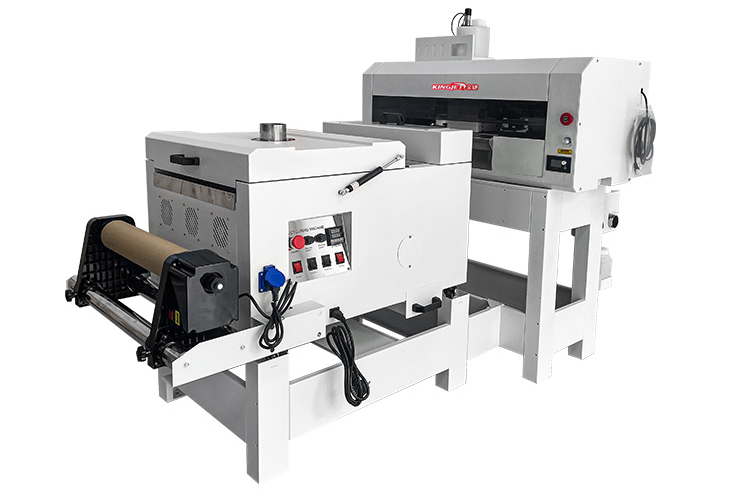DTF printers operate based on several technical principles that are crucial for the printing process, including image processing, ink deposition, and heat transfer. Here's a breakdown of these principles:

1. Image Processing: The first step in DTF printing is image processing. This involves preparing the digital artwork or design file that will be printed onto the DTF film. The image may undergo color separation, resizing, or other adjustments to ensure optimal print quality.
2. Ink Deposition: Once the artwork is processed, the DTF printer deposits ink onto a specialized DTF film. The ink is typically a water-based, pigment-based, or sublimation ink formulated specifically for DTF printing. The printer applies the ink in precise droplets onto the film, following the color information from the processed image.
3. Film Handling and Adhesion: After the ink is deposited onto the DTF film, the film is carefully handled to prevent smudging or damage. The ink needs to adhere to the film surface properly for accurate transfer onto the substrate during the heat transfer process.
4. Heat Transfer: The DTF film with the printed design is placed onto the substrate, typically a fabric or garment, with the ink-side facing down. Heat and pressure are then applied to the film-substrate combination using a heat press or a similar heat transfer device. The heat causes the ink to sublimate, melt, or bond with the substrate fibers, transferring the design onto the fabric.
5. Cure and Fixation: After the heat transfer process, the printed design needs to undergo a curing or fixation process to ensure durability and washability. This can involve additional heat treatment or post-pressing to enhance the ink adhesion and bond with the fabric substrate.
The technical principles of DTF printers involve a combination of digital image processing, ink deposition, and heat transfer techniques. The printer's precision in depositing ink droplets onto the DTF film, along with the accuracy of the heat and pressure applied during the transfer process, contribute to the overall print quality and durability of the final product.
It's important to note that specific DTF printer models and manufacturers may have variations in their technical processes and features. Understanding the principles behind DTF printing can help users optimize their workflow, troubleshoot issues, and achieve the desired results.
kenteer has launched DTF printers for customers . If you have any needs, you can contact us for a quote.
